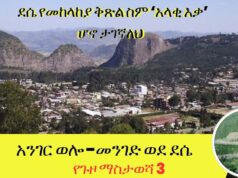“As I speak today, 8 million people require emergency food or cash assistance,” said Mitiku Kassa, Ethiopia’s disaster prevention chief, speaking at a press conference in the capital on Thursday. He said that most of the displaced are in the country’s Oromia and Somalia regions. “Out of these, 4.5 million of them have an acute need of humanitarian assistance,” he said.
Ethiopia’s number of internally displaced people nearly doubled in 2018 creating the need for so much humanitarian assistance in 2019, he said.
Ethiopia was engulfed in ethnic-based conflicts in several parts of the country in recent months, notably between the Oromo and Somali ethnic groups, over identity questions and conflict over resources. Confrontations still persist in other parts of the East African nation, especially between ethnic Amharas and Tigreans in north and north-western Ethiopia.
“Ethiopia is at a transition,” added Mitiku. “Some of the humanitarian challenges are from conflict hazards we have been seeing in recent months, and it is affecting many people . they are an unfortunate effect of transitional periods.” An estimated 2.7 million displaced people and returnees benefited from assistance last year, but that funding will not go beyond March 2019.
“Some 4 million children and pregnant and lactating women will require therapeutic supplementary feeding and in excess of 600,000 children under five will require treatment for severe acute malnutrition. This is huge,” said Aeneas Chuma, the U.N. humanitarian coordinator in Ethiopia. “With its generous open-door policy, Ethiopia continues to provide a safe haven to over 900,000 people fleeing from neighboring countries. Yet, some 3 million of its own citizens roil from conflict and climate-driven displacement.”
In addition to its own displaced and needy people, Ethiopia is also home to nearly 1 million refugees from neighboring countries like South Sudan and Somalia.

























